Building in Berlin: a new book shines light on the early career of Richard Neutra
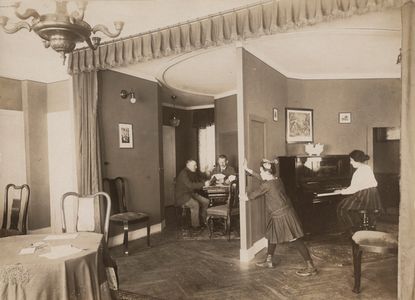
While Richard Neutra (1892-1970) is famed for his modernist houses in California, a new book highlights a lesser known part of his early career when he was living in Berlin and working for architect Erich Mendelsohn. Richard Neutra in Berlin traces his success back to the Zehlendorf housing project of 1923 where he defined his strong and experimental modernist style.
After studying architecture at the Vienna University of Technology, learning how to define strong lines and design powerful architectural forms under Adolf Loos, Neutra worked briefly in Luckenwalde, Germany as a city architect in 1921 before moving to Berlin to take up a job at the studio of Mendelsohn, an architect whose style bridged art deco and modernism with an almost classical artistry.
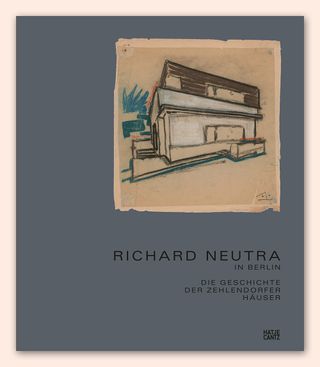
The cover of 'Richard Neutra in Berlin', published by Hatje Cantz
Neutra joined the practice while Mendelsohn was working on a commission to extend Mossehaus, home to mainly liberal newspapers such as the Berliner Tageblatt. An important example of Mendelsohn’s approach, the original 19th century building was fitted with a five-storey structure with curved ribbon windows forming a grand modernist hull at the corner of Jerusalemer Strasse and Schützenstrasse, melding new with old. While the curve is a fairly rare occurrence in the designs of Neutra, his confidence with the horizontal layering of forms can be seen only a few years later in his Lovell House, of 1928, considered one of his early masterpieces.
Yet, it was Zehlendorf in west Berlin suburbia where Neutra developed, on a small and humble scale, the first of his minimal, clean-cut modernist houses that later became icons of Californian architecture. The ten detached houses in Zehlendorf, developed for the contractor Adolf Sommerfeld, are cubist in their construction with flat white facades, ribbon windows and cantilevered balconies. Fascinatingly, the houses were built with revolving interior floors, which allowed residents to reorientate their living room to connect to other ground floor rooms. While unfortunately no longer in existence, this interior detail showed Neutra’s sense of experimentation and fearless idealism which is seen less and less in architecture today.
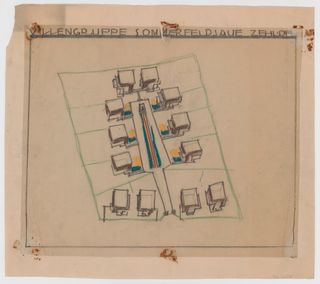
Richard Neutra's drawing of the Zehlendorf housing scheme
Editor Harriet Roth used Neutra’s diaries as sources to understand his professional experiences, private encounters and his emigration to the US in 1923, after Zehlendorf was complete, integrating them as facsimiles into the book, while also researching the life-lines of the inhabitants of the houses, investigating their historic developments and phase of renovation in the 2000s.
Moving to South California in the same year of the completion of the Zehlendorf scheme, where he would remain for the rest of his life, marked a new stage of Neutra’s career. He worked briefly for Frank Lloyd Wright and then collaborated with Rudolf Schindler over a few years, yet mostly he marched to his own tune with a strict modernism, first composed at Zehlendorf, that he bestowed upon the cathartic landscapes of southern California.
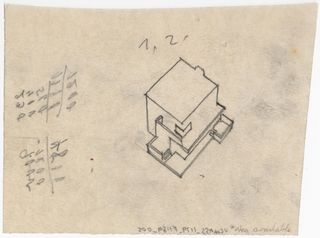
Drawings by Neutra included in the book show the confidence of his hand and his designs. The Zehlendorf scheme was featured in the 'Modern Architecture' exhibition at MoMA in 1932
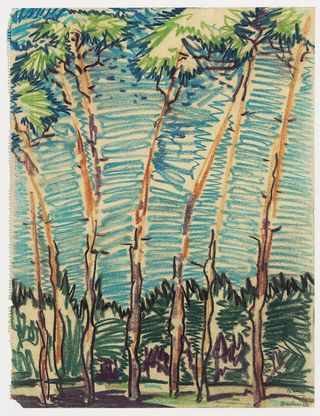
Neutra was also the landscape designer of the Zehlendorf housing project, which is located in a leafy suburb of west Berlin

Book editor Harriet Roth also investigates the history of the Zehlendorf houses since their completion, the inhabitants, the interiors and their renovation
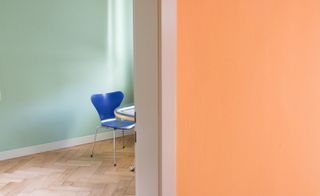
Colourful interiors represent the experimentative and bold style of Neutra
INFORMATION
Richard Neutra in Berlin, €48. For more information, visit the Hatje Cantz website
Wallpaper* Newsletter
Receive our daily digest of inspiration, escapism and design stories from around the world direct to your inbox
Harriet Thorpe is a writer, journalist and editor covering architecture, design and culture, with particular interest in sustainability, 20th-century architecture and community. After studying History of Art at the School of Oriental and African Studies (SOAS) and Journalism at City University in London, she developed her interest in architecture working at Wallpaper* magazine and today contributes to Wallpaper*, The World of Interiors and Icon magazine, amongst other titles. She is author of The Sustainable City (2022, Hoxton Mini Press), a book about sustainable architecture in London, and the Modern Cambridge Map (2023, Blue Crow Media), a map of 20th-century architecture in Cambridge, the city where she grew up.
-
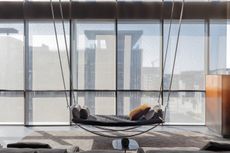 Blue Copper Loft is a Dubai sanctuary for a modern nomad
Blue Copper Loft is a Dubai sanctuary for a modern nomadBlue Copper Loft designed by Anarchitect in the heart of Dubai is a peaceful, yet luxurious sanctuary for a modern nomad
By Ellie Stathaki Published
-
 DAB 1α electric motorbike is the first product from French manufacturer DAB Motors
DAB 1α electric motorbike is the first product from French manufacturer DAB MotorsThe DAB 1α is an all-electric motorbike born out of industrial design, gaming culture and aviation technology, and now available to order
By Jonathan Bell Published
-
 The 2024 Ivor Novello nominations for songwriting have been revealed
The 2024 Ivor Novello nominations for songwriting have been revealed77 British and Irish songwriters and composers make up this year's nominees, announced tonight at London's Groucho Club
By Charlotte Gunn Published
-
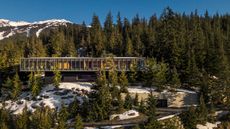 Marcio Kogan’s Studio MK27 celebrated in this new monograph from Rizzoli
Marcio Kogan’s Studio MK27 celebrated in this new monograph from Rizzoli‘The Architecture of Studio MK27. Lights, camera, action’ is a richly illustrated journey through the evolution of this famed Brazilian architecture studio
By Jonathan Bell Published
-
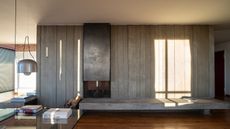 ‘Interior sculptor’ Christophe Gevers’ oeuvre is celebrated in new book
‘Interior sculptor’ Christophe Gevers’ oeuvre is celebrated in new book‘Christophe Gevers’ is a sleek monograph dedicated to the Belgian's life work as an interior architect, designer, sculptor and inventor, with unseen photography by Jean-Pierre Gabriel
By Tianna Williams Published
-
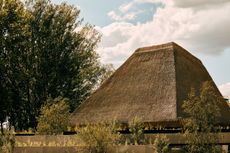 Reethaus is a performance space conceived as ‘a place for radical presence’ in Berlin
Reethaus is a performance space conceived as ‘a place for radical presence’ in BerlinReethaus, a newly opened cultural centre in Berlin, kick-starts a fresh era for the city’s growing creative neighbourhood of Flussbad
By Ellie Stathaki Published
-
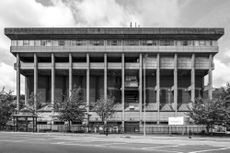 Flick through ‘Brutal Wales’, a book celebrating concrete architecture
Flick through ‘Brutal Wales’, a book celebrating concrete architecture‘Brutal Wales’ book zooms into a selection of concrete Welsh architecture treasures through the lens of photographer Simon Phipps
By Ellie Stathaki Published
-
 Duplex brings two houses together as a single, raw, theatrical home in Leipzig
Duplex brings two houses together as a single, raw, theatrical home in LeipzigDuplex by Atelier ST is a raw and textured family home born of the transformation of two smaller residential buildings in Leipzig, Germany
By Ellen Himelfarb Published
-
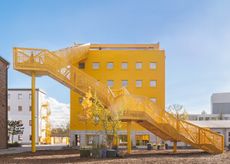 Berlin's Atelier Gardens gets bright yellow focal point within MVRDV masterplan
Berlin's Atelier Gardens gets bright yellow focal point within MVRDV masterplanThe bright yellow HAUS 1 becomes a key addition to Atelier Gardens in Berlin, part of an ever-evolving, sustainable masterplan by MVRDV
By Harriet Thorpe Published
-
 Architecture books to inspire shelf love
Architecture books to inspire shelf loveHere at Wallpaper*, we’ve got architecture books piling up; among them, these are the photographic tomes, architects’ monographs and limited editions that we couldn’t resist
By Ellie Stathaki Published
-
 Bike-tyre maker Schwalbe’s HQ embraces sustainability through design
Bike-tyre maker Schwalbe’s HQ embraces sustainability through designThe new Schwalbe office building in Germany, featuring interiors designed by Archiproba Studios, champions contemporary sustainable architecture
By Ellie Stathaki Published